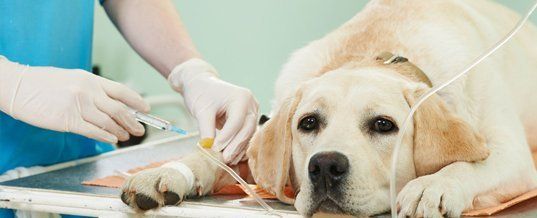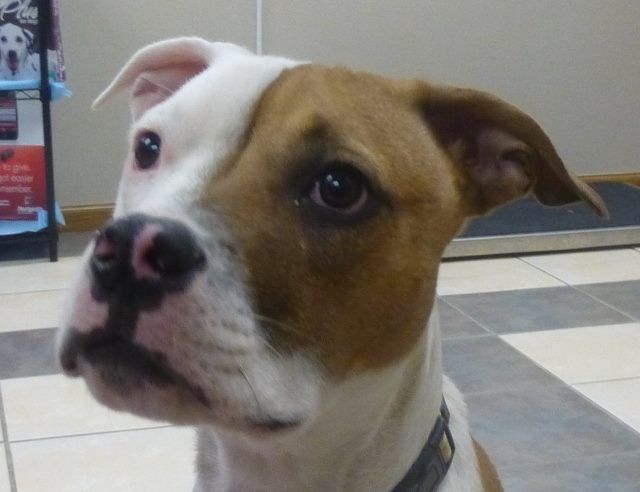Surgical Care
Dr. Vercande provides many routine surgical procedures and several advanced soft tissue surgical procedures at Best Friends Veterinary Care. However, because we want your pet to receive the best possible outcome, we occasionally refer our patients to specialists, board-certified veterinary surgeons to perform orthopedic or complex operations when advanced equipment or training will be required.
Call us today to schedule an appointment.

Anesthesia and Pain Control
Rest assured that we take every precaution so that your pet receives the highest-quality care. A physical exam is performed, and preanesthetic testing is recommended before surgery. We monitor your pet during surgery and provide pain medication to keep your pet comfortable during the procedure and recovery period.
Anesthesia and patient monitoring vary greatly from clinic to clinic. The type of anesthesia we use depends on the procedure performed. Some require general anesthesia, while others may only require local anesthesia. We monitor every procedure closely, whether it’s routine or more advanced.
For more involved procedures, your pet will need to be administered general anesthesia so that he or she will be unconscious and not feel pain. Many pet owners worry about general anesthesia for their pets. Be assured that modern anesthesia is generally quite safe; however, to further lower any risk, the physical examination and preoperative blood work can help us to catch any underlying health issues. We also follow a specific anesthetic protocol, including monitoring vital signs during the procedure, to ensure the safety of our patients.
For general anesthetic procedures, we begin by administering a sedative to help your pet relax and decrease any anxiety and pain. Once your pet is relaxed and sleepy, an intravenous drug is given to provide complete anesthesia and place a breathing tube into the pet’s trachea (windpipe). To maintain the state of unconsciousness, a gas anesthetic in combination with oxygen is given through the breathing tube. After the procedure is finished, your pet is given oxygen alone for a short time during recovery to help him or her clear the gas anesthetic from the lungs.
For a minor surgical or diagnostic procedure, we sometimes use a local anesthetic to help control pain. Some examples of these types of procedures include a biopsy in which a small portion of tissue is surgically removed so it can be examined, removal of a torn toenail, or repair of a minor wound. For examination of eye injuries, a topical local anesthetic eye drop is often used. Local anesthetics cause a loss of sensation in the area where the procedure is being performed. We sometimes use a sedative and/or anxiolytic (antianxiety medication) with the local anesthetic to keep pets calm during a procedure.
Pain medications are given before, during, and after the procedure as needed to control pain in your pet. When your pet is discharged home after most surgical procedures, he or she will also be prescribed pain medication to be given at home for several days. If you feel your pet’s pain is not well controlled, do not hesitate to call us so that we can adjust your pet’s medication to keep him or her comfortable during the recovery period.

Spaying
Spaying your female pet provides many benefits. The procedures prevent females from becoming pregnant and reproducing, and can help your dog or cat live a longer, healthier life. It will not change your pet’s personality. We recommend that this procedure is performed at 6 months of age for small breed dogs and cats, and at 4-5 months of age for medium and large breed dogs. We do not recommend spaying your female dog while she is in heat as the risk of complications is higher at this time. You'll need to wait at least 8 weeks from the time your dog finishes her heat cycle to schedule her spay. This is not the case in female cats, and they can safely be spayed even during their heat cycle. If you have questions or concerns about this procedure, we can discuss them during your puppy/kitten visits, or adult pet’s exam.
Spaying your female pet provides protection to her against potentially deadly diseases, including bacterial infections (pyometra), reproductive tract diseases, and several types of cancer (especially mammary tumors). Once your pet is spayed, you won’t have to worry about her going into heat. (No mess that often accompanies the heat cycle in female dogs and the pacing and crying that happens with female cats.) Spaying your pet has the added benefit of helping to control the dog and cat overpopulation problem, keeping more animals out of shelters.
The spay procedure involves removing the ovaries and uterus (ovariohysterectomy). It is a surgical procedure that does need to be performed under general anesthesia. We use modern anesthesia protocols and continually monitor your pet’s vital signs to help ensure her safety.
Neutering
Neutering your male pet provides many benefits. The procedure prevents males from reproducing and can help your dog or cat live a longer, healthier life. It will not change your pet’s personality. We recommend that this procedure is performed at 6 months of age for small and medium breed dogs and cats, and at 5-6 months of age for large breed dogs. If you have questions or concerns about this procedure, we can discuss them during your puppy/kitten visits or adult pet’s exam.
Neutering your male pet reduces or eliminates his risk for prostate and testicular cancer, and sexually transmitted diseases. Neutering can also reduce or eliminate the undesirable and embarrassing behavior, such as roaming, fighting, humping and spraying. Neutering your pet has the added benefit of helping to control the dog and cat overpopulation problem, keeping more animals out of shelters.
The neutering procedure involves removing the testicles. It is a surgical procedure that does need to be performed under general anesthesia. We use modern anesthesia protocols and continually monitor your pet’s vital signs to help ensure his safety.
Soft Tissue Surgery
Dr. Vercande performs many types of soft tissue surgeries at our clinic. Soft tissue surgeries are those that are not associated with bone.
The most common soft tissue surgery performed on pets is the removal of masses or lumps. The majority of these masses, once removed and evaluated by a pathologist at the laboratory, are found to be benign (non-cancerous); however, occasionally, they are more serious. Your pet will receive the best possible outcome with these types of masses with early removal of the mass and accurate diagnosis. This will allow us to provide the best possible treatment or refer you to a veterinary specialist in oncology (cancer) for your pet’s treatment.
Other common soft tissue surgeries include repair of wounds, eyelid surgery, cherry eye repair in dogs, and removal of excess gingival (gum) tissue.
Call 319-341-7111 for a quality surgical care.
"We just started going to Best Friends and we LOVE it!! Thank you so much for your help, Ada."
Erica Brooke Sweeney, Facebook

